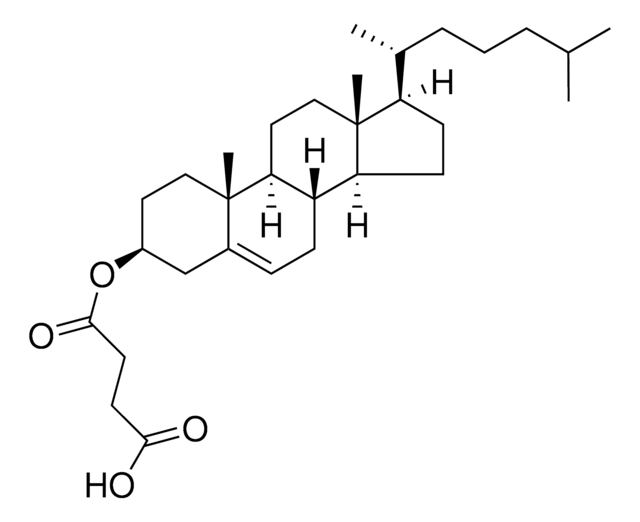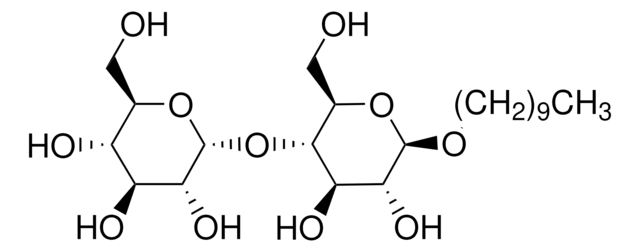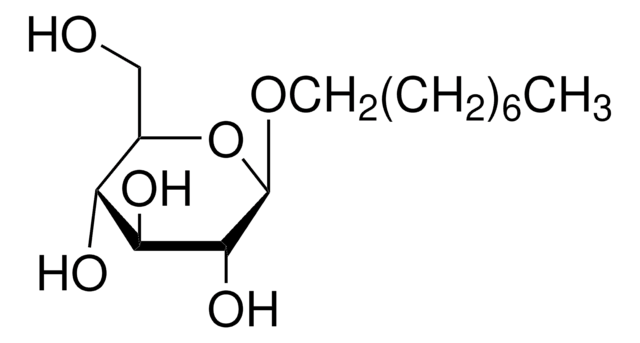C6013
Cholesteryl hemisuccinate tris salt
anionic detergent
Synonym(s):
3β-Hydroxy-5-cholestene 3-hemisuccinate, 5-Cholesten-3β-ol 3-hemisuccinate, CHEMS, CHS, Cholesteryl hydrogen succinate
About This Item
Recommended Products
biological source
synthetic (organic)
Assay
≥98% (TLC)
form
powder
functional group
ester
shipped in
ambient
storage temp.
−20°C
SMILES string
NC(CO)(CO)CO.CC(C)CCC[C@@H](C)[C@H]1CC[C@H]2[C@@H]3CC=C4C[C@H](CC[C@]4(C)[C@H]3CC[C@]12C)OC(=O)CCC(O)=O
InChI
1S/C31H50O4.C4H11NO3/c1-20(2)7-6-8-21(3)25-11-12-26-24-10-9-22-19-23(35-29(34)14-13-28(32)33)15-17-30(22,4)27(24)16-18-31(25,26)5;5-4(1-6,2-7)3-8/h9,20-21,23-27H,6-8,10-19H2,1-5H3,(H,32,33);6-8H,1-3,5H2/t21-,23+,24+,25-,26+,27+,30+,31-;/m1./s1
InChI key
SLDYONDUXRBLLR-XTCKSVDZSA-N
Application
- to prepare solubilization buffer for glucan synthase assay
- to prepare immunoprecipitation buffer for immobilization of opioid receptors on paramagnetic beads.
- as a membrane stabilizer for liposomes and protein synaptogyrin-1
- as a component of a folate-modified self-microemulsifying drug delivery system.
- with N-dodecyl β-D-maltoside (DDM) to solubilize erythrocyte ghosts and chemokine receptor CCR1
- for protein solubilization
Biochem/physiol Actions
Preparation Note
Storage Class Code
11 - Combustible Solids
WGK
WGK 3
Flash Point(F)
Not applicable
Flash Point(C)
Not applicable
Choose from one of the most recent versions:
Already Own This Product?
Find documentation for the products that you have recently purchased in the Document Library.
Customers Also Viewed
Our team of scientists has experience in all areas of research including Life Science, Material Science, Chemical Synthesis, Chromatography, Analytical and many others.
Contact Technical Service









![3-[(3-Cholamidopropyl)dimethylammonio]-1-propanesulfonate hydrate 98%](/deepweb/assets/sigmaaldrich/product/structures/322/134/88b00489-fbbd-47b7-ba3e-430dd6a3c852/640/88b00489-fbbd-47b7-ba3e-430dd6a3c852.png)


